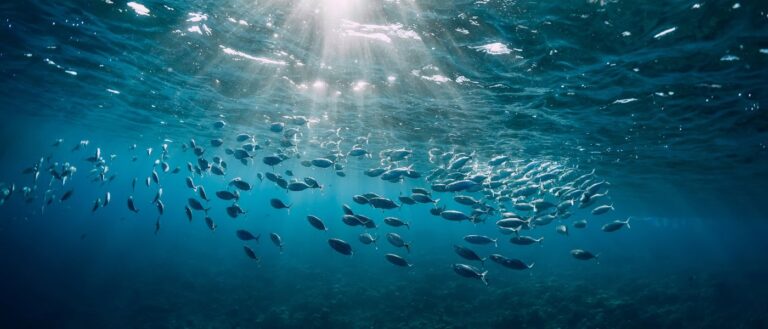If the thought of what lurks in the ocean sends chills up your spine, you’re not alone—that’s known as thalassophobia, or a fear of large, deep bodies of water. And it’s a valid concern, being that more than 80% of the ocean remains unexplored to this day.

To dive into what we do know about the deep blue sea in honor of World Oceans Day (June 8), The Daily turned to the expertise of Anne Willem Omta, visiting assistant professor in the Department of Earth, Environmental and Planetary Sciences at the College of Arts and Sciences.
Omta pursued his PhD in oceanography in the Netherlands at the Vrije Universiteit Amsterdam. He then joined the Massachusetts Institute of Technology as a postdoctoral fellow and worked there for a decade as a research scientist.
At Case Western Reserve, his research has focused on modeling the ocean carbon cycle—from those processes at the very small level (such as phytoplankton growth and ecosystem dynamics) to larger processes involving time and length scales (such as the relationship between the carbon cycle and ice ages). This semester, he taught Introduction to Oceanography (EEPS 115) and Introduction to Environmental Thinking (ESTD 101), and this fall, he’ll teach Weather and Climate (EEPS 117).
Read on to learn from Omta five unsettling facts you might not know about the ocean.
1. The deepest part of the ocean extends approximately 36,200 feet.
This area is called the Challenger Deep and is located in the western Pacific Ocean in the southern end of the Mariana Trench. Ocean trenches occur where two tectonic plates collide. In the case of the Mariana Trench, the two tectonic plates are the Philippine Sea Plate to the west and the Pacific Plate to the east. It’s also worrisome to note that the ocean can quite literally crush you to death: the pressure in the Challenger Deep is about 1,100 times the air pressure that our bodies are used to.
2. Deep sea vents can reach up to 700 degrees Fahrenheit.
Hydrothermal vents, also known as deep sea vents, occur where two tectonic plates spread, for example the Eurasian and North American Plates in the middle of the North Atlantic. Magma upwells in these locations, heating the seawater that is then released as white or black “smoke.” Furthermore, hydrothermal vents release compounds such as hydrogen sulfide that support a unique ecosystem including giant tube worms.
3. Most of the ocean consists of total darkness.
Light does not penetrate beyond a surface layer of about 600 feet, which is where all photosynthesis in the ocean takes place. Almost all life at deeper levels is supported by “marine snow” falling down from the ecosystem at the ocean surface.
4. Great white sharks congregate en masse every year in one location.
A large number of white sharks that forage each fall in the waters off California migrate annually to an open ocean region halfway between Hawaii and the Baja California peninsula in Mexico. It’s a remote spot in the Pacific Ocean known as the White Shark Café. It is unclear, however, why the sharks leave bountiful food along the central California coast and migrate to a remote oceanic desert about the size of Colorado. It is thought that they may either use the area for mating or that there may be a deep-sea foraging ground there.
5. One milliliter of ocean water can contain approximately 10 million viruses.
Most of these marine viruses infect phytoplankton and bacterial cells. This is thought to play a central role in the marine ecosystem, as large-scale viral infection may lead to termination of algal blooms. Furthermore, infected phytoplankton may release toxins into the water, which is thought to have been a key factor in the 2014 Toledo Water Crisis.
Did any of these facts prompt you to want to discover more about oceans? Consider studying geological sciences or environmental geology at Case Western Reserve University!


